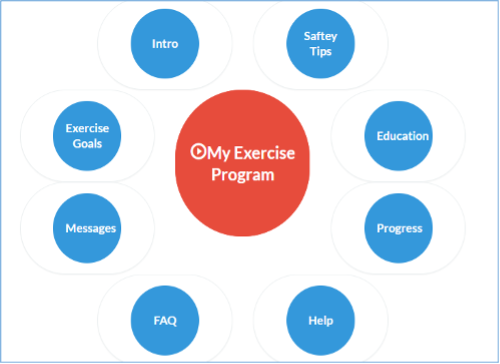Multiple Sclerosis
Physical Telerehabilitation Program for Multiple Sclerosis Patients Improves Patients' Quality of Life



Posted April 20, 2022
Joel Stein, M.D., Joseph Finkelstein, M.D., Ph.D., Columbia University Medical Center
 Dr. Joel Stein
Dr. Joel Stein
 Dr. Joseph Finkelstein
Dr. Joseph Finkelstein
Patients with Multiple Sclerosis (MS) and significant mobility impairment require lifelong physical rehabilitation; however, many barriers limit their ability to travel to and participate in rehabilitation programs. Telemedicine approaches have the potential to significantly improve access for MS patients to rehabilitation services but their efficacy has not been evaluated systematically.
The CDMRP Multiple Sclerosis Research Program funded a pilot clinical trial to Drs. Joseph Finkelstein and Joel Stein at Columbia University Medical Center. The pilot trial aims to determine the effect of a physical telerehabilitation program on functional outcomes in MS patients with mobility impairment (Figure 1). The participants were randomly assigned to telerehabilitation and control groups. The intervention group utilized the telerehabilitation system daily, while the control group received periodic newsletters. Patients were assessed at baseline, the end of a 3-month rehabilitation program, and 6 months follow up.
 Figure 1: Patient Interface of the Physical Telerehabilitation Program
Figure 1: Patient Interface of the Physical Telerehabilitation Program
Overall, the results show that participation in a physical telerehabilitation program leads to significant improvements in disease-specific quality of life (QOL) including fatigue, balance, muscle resistance, and patient perceptions of the physical and psychological impact of MS. As MS is a chronic neurodegenerative condition that currently has no cure, improvement in QOL is the major indicator of a successful intervention. The study also investigated sixteen parameters of the MS Quality of Life (MSQOL-54) and found that the intervention group showed improvement in many areas, such as physical health, role limitations-physical, role limitations-emotional, pain, health perceptions, social function, cognitive function, health distress, satisfaction with sexual function, overall quality of life, physical health composite, and mental health composite; however, the control group did not show any improvements in these areas, instead, many areas worsened in the control group. In addition, at a 6-month follow-up, the intervention group demonstrated a statistically significant decrease in urgent care utilization compared to the control group.
The high acceptance rate and positive impact of the telerehabilitation program could impact other neurodegenerative diseases. These findings pave the way for the development and implementation of effective home-based telerehabilitation approaches for patients with a spectrum of neurodegenerative conditions and individuals with limited mobility.
The researchers plan to conduct a phase III randomized clinical trial, which will include a larger group of patients with MS representing a broader range of disability.
References:
Jeong IC, Karpatkin H, and Finkelstein J. 2021. Physical telerehabilitation improves quality of life in patients with multiple sclerosis. Studies in Health Technology and Informatics 284:384-388.
Jeong IC, Karpatkin H, Stein J, and Finkelstein J. 2020. Relationship between exercise duration in multimodal telerehabilitation and quality of sleep in patients with multiple sclerosis. Studies in Health Technology and Informatics 270:658-662.
Jeong IC, Liu J, and Finkelstein J. 2019. Factors affecting adherence with telerehabilitation in patients with multiple sclerosis. Studies in Health Technology and Informatics 257:189-193.
Finkelstein J and Liu J. 2018. Designing telerehabilitation system for multipronged exercise in patients with multiple sclerosis. Studies in Health Technology and Informatics 254:16-23.
Finkelstein J and Liu J. 2018. Usability of telerehabilitation system supporting multipronged exercise in patients with multiple sclerosis. Studies in Health Technology and Informatics 251:281-284.
Liu J and Finkelstein J. 2018. Telerehabilitation systems for personalized exercise engagement of patients with multiple sclerosis. 2018 IEEE 31st International Symposium on Computer-Based Medical Systems 446-447.
Link:
Last updated Monday, March 10, 2025














